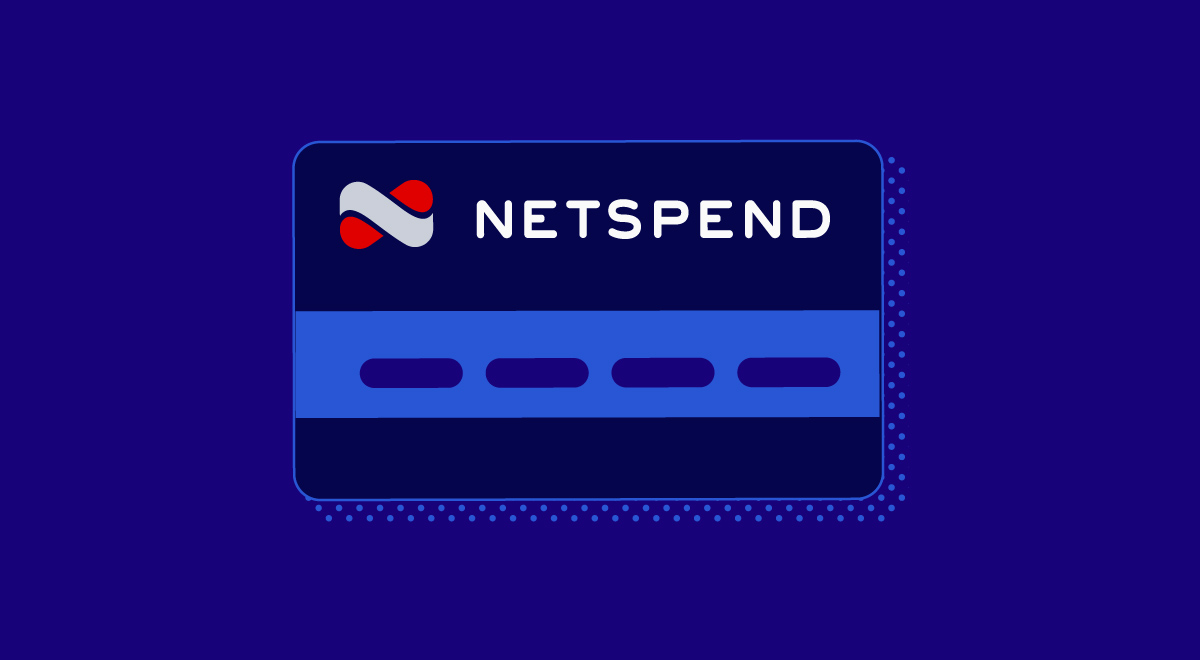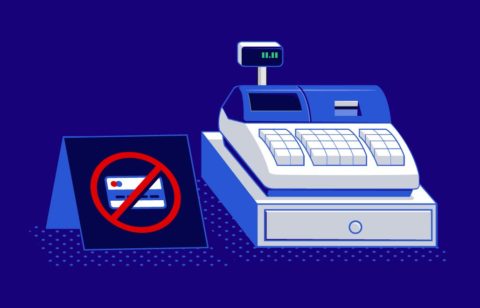If you’ve had trouble with credit card debt in the past — or if you simply want to be extra careful about avoiding debt in the future — a prepaid debit card can be a great option for paying for your purchases and other expenses.
These cards only allow you to spend up to the amount of money you load onto the card. That way, you can’t overspend and end up in debt trouble.
“Prepaid cards are a boon for consumers who often have difficulty overspending,” says Reilly S. White, Associate Professor of Finance and Assistant Dean of Teaching and Learning at the University of New Mexico’s Anderson School of Management.
What Is A Netspend Card?
Netspend is a prepaid debit card that also offers the perk of a bank savings account that pays a hefty 5% in interest. But the card comes with hefty fees that can negate the interest you earn.
Netspend offers Visa, Mastercard, and corporate prepaid debit cards. The company says that when you use these reloadable cards, you can get your paycheck up to two days faster or government benefits up to four days sooner via direct deposit.
In addition, they promise tax refunds “faster than a paper check.”
Cardholders also can earn cash-back rewards via the Payback Rewards program.
According to Netspend, the cards come with:
- No credit check
- No activation fee
- No minimum balances
- FDIC insurance
- Protection against unauthorized purchases
And you can use virtual cards to get what Netspend describes as “an added layer of control over who has your card number.”
How Does A Netspend Prepaid Debit Card Work?
There are a couple of ways to add cash to your Netspend card. You can have money loaded on the card in the form of a direct deposit. You can also add a paper check to your card by either using your phone and Mobile Check Load or by stopping by one of more than 130,000 reload locations nationwide.
Then, use the Netspend card to:
- Shop anywhere.
- Pay your bills online.
- Withdraw money from an ATM machine or at a cash register.
- Send money directly to members of your family.
What Are The Benefits Of Using A Netspend Card?
A Netspend prepaid debit card offers you an alternative to opening a bank checking account. No credit check is necessary to get one of these cards.
Netspend says holding this card allows you to access your paycheck or government benefits more quickly.
Using a Netspend card also can help you from overspending, since you can only spend up to the amount of money that’s loaded on the card. This differs from a credit card, which allows you to spend more, and can get you into debt trouble.
“The largest ‘pro’ for using a Netspend prepaid debit card involves its ability to help consumers with budgeting and spending,” White says.
If you have a Netspend card, you also can get access to high-yield savings account with up to a 5% interest rate — far above the national average for savings accounts. You can transfer money from a Netspend card to a savings account. You can also move money from the savings account to the card six times each month.
Netspend offers an optional overdraft protection service. With this perk, you get a 24-hour grace period if you overdraft the account. You won’t owe a fee if you bring your account to a positive available balance within 24 hours from the transaction that triggered the negative balance.
But, if you fail to do this within the 24-hour period, you’ll be charged $20 per each transaction that overdraws the account by more than $10. Up to a maximum of five such fees may be applied per calendar month.
White says a Netspend account has “a large footprint and easy-to-understand marketing materials,” and that the high interest rate on the savings account is likely to appeal to many consumers.
People Also Read
What Are The Disadvantages Of Using A Netspend Card?
The hefty fees that come with Netspend cards might be their biggest drawback.
“The largest ‘con’ is its fee structure,” White says. “With any financial service product, you need to clearly understand the fee structure.”
If you choose the monthly plan, you’ll pay a monthly fee. At the time of publication, this cost was $9.95. You can reduce the monthly fee by half if you receive $500 in payroll or government benefit direct deposits in one calendar month.
If you choose the “pay as you go” plan, you won’t owe a monthly fee. However, with this plan, you will pay domestic purchase transaction fees of $1.95.
Several other fees also apply including:
- ATM withdrawal fee: $2.95
- Cash reload fee: $3.95
- ATM balance inquiry fee: 50 cents
- Inactivity fee (after 90 days with no transactions): $5.95
- Netspend also says that it charges “seven other types of fees”
In short, many of the things you do with this card will result in fees in one way or another.
Netspend cards also have a big disadvantage when compared to credit cards: Your spending activity will not be reported to the major credit-reporting agencies.
“Prepaid debit cards won’t improve your credit score,” White says. “Consumers who are looking to build or rebuild credit using a prepaid card should seek out prepaid credit cards instead.”
Who Should Be Using Netspend Cards vs. Credit Cards?
Prepaid debit cards can make sense for those with a history of credit card debt problems. Unlike with credit cards, you can’t go into debt using a debit card. Once you run out of money on the card, you’ll no longer be able to use it to make charges.
However, the Netspend card comes with significant fees. Because of this reality, it makes sense to shop around and see if you can find an even better deal.
“There are many providers of prepaid cards,” White says. “Consumers should compare the features they find most important — for example, fee structure, access to places where the card can be loaded and interest rates on deposited money.”
At National Debt Relief, we take pride in empowering people to regain their financial stability through our proven debt relief program. Contact us and talk to a financial expert who will work with you to find the best option to settle your debt and help you achieve financial independence.









